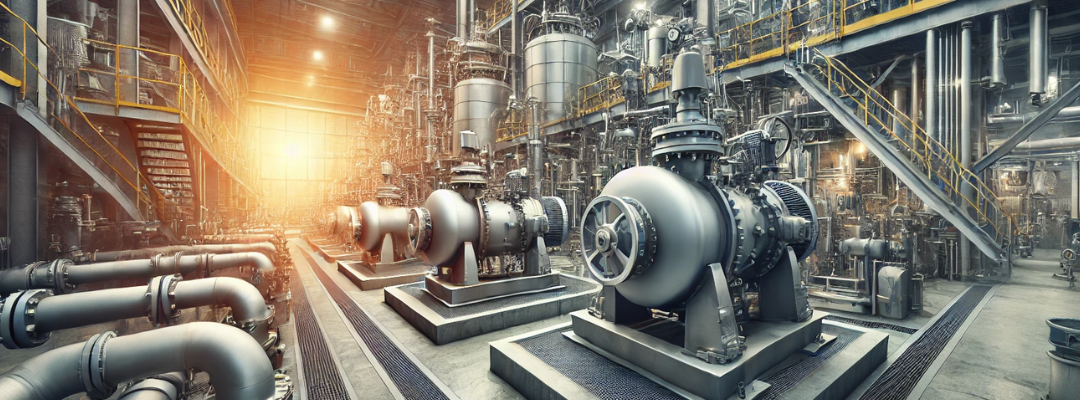Zinc phosphating is a chemical process used for surface treatment of metals to improve corrosion resistance, promote paint adhesion, and reduce wear. It involves the application of a zinc phosphate coating through a series of immersion or spray processes. Pumps play a crucial role in circulating chemicals, controlling flow, and ensuring the uniform application of the phosphating solution.
Key Pump Types for Zinc Phosphating Process:
- Centrifugal Pumps:
- Application: Centrifugal pumps are widely used for circulating the zinc phosphate solution in immersion tanks or spray systems.
- Advantages: These pumps offer continuous flow, are durable, and can handle relatively high flow rates, which are important for recirculating large volumes of the phosphating solution.
- Magnetic Drive Pumps:
- Application: These pumps are ideal for handling aggressive chemicals like zinc phosphate solutions because they are seal-less and reduce the risk of leaks.
- Advantages: Magnetic drive pumps prevent chemical leakage, provide high chemical resistance, and can operate in environments where chemical contamination or spillage must be avoided.
- Diaphragm Pumps:
- Application: Diaphragm pumps are used to transfer and circulate acidic or alkaline chemicals involved in the pre-treatment and phosphating processes.
- Advantages: They offer high resistance to corrosion and are excellent for handling high-viscosity fluids and slurries, making them ideal for chemical dosing and circulation.
- Peristaltic Pumps:
- Application: These pumps are used for precise dosing of chemical additives in the zinc phosphating process.
- Advantages: Peristaltic pumps provide excellent flow control, are easy to maintain, and have no direct contact between the pump’s moving parts and the chemical solution, making them highly durable in corrosive environments.
- Gear Pumps:
- Application: Gear pumps are suitable for transferring high-viscosity liquids like heavy phosphating solutions or additives in the process.
- Advantages: These pumps provide a steady flow at high pressures and are capable of handling viscous fluids, which is essential for certain stages of zinc phosphating where thicker chemicals are used.
- Air-Operated Double Diaphragm (AODD) Pumps:
- Application: AODD pumps are used in the zinc phosphating process where chemical circulation or transfer is needed, and they are well-suited for handling aggressive chemicals.
- Advantages: They can run dry, handle abrasive and viscous fluids, and are explosion-proof, making them ideal for highly volatile or corrosive environments.
Critical Pump Features for Zinc Phosphating:
- Corrosion Resistance: Pumps used in zinc phosphating need to be constructed from materials resistant to acidic and alkaline chemicals, such as polypropylene, stainless steel, or Hastelloy, to prevent degradation over time.
- Temperature Tolerance: The phosphating process may involve heated solutions, so the pumps should be able to handle elevated temperatures without material degradation or loss of efficiency.
- Chemical Compatibility: Since the zinc phosphating solution contains chemicals like phosphoric acid, zinc oxide, and other additives, the pumps must be compatible with these chemicals to avoid corrosion or damage.
- Flow Control: Precise flow control is critical for achieving consistent phosphating quality. Pumps must be able to deliver a controlled, even flow to ensure uniform coating across the entire surface area.
Pump Applications in Zinc Phosphating Process:
- Chemical Circulation: Pumps are used to continuously circulate the phosphating solution in immersion tanks to ensure a uniform coating.
- Spray Systems: In spray phosphating, pumps deliver the solution through nozzles to cover metal parts uniformly.
- Dosing Systems: Pumps like peristaltic or diaphragm types are used to dose additives and maintain the proper chemical balance in the solution.
- Pre-treatment Stages: Pumps are also used to handle cleaning and degreasing chemicals prior to the zinc phosphating step. Proper cleaning is essential for effective phosphating.
- Post-treatment: After phosphating, pumps are required for rinsing and applying sealing or passivation chemicals to further improve corrosion resistance.

